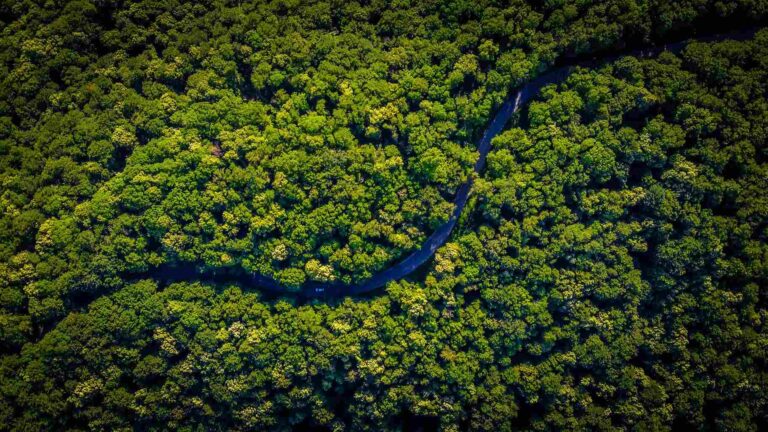Deforestation has slowed in recent years but still accounts for around 18 million acres lost per year. This phenomenon is caused mostly by agriculture, harvesting, forest fires, and overgrazing.
Many of the world’s poorest people already struggle to put food on the table due to the inability to cultivate land that has been damaged by forest loss.
The good news is that the United Nations General Assembly isn’t the only group concerned about the condition of the world’s forests. Deforestation has been widely acknowledged as a major contributor to environmental and economic problems by groups as diverse as governments, NGOs, and private businesses. They are also making an effort to revive these vital ecosystems.
Several global reforestation projects have been fruitful over the past few decades, revitalising once-declining forest ecosystems. Here’s a look at 4 reforestation projects that were successful in the world.
Table of Contents
4 successful reforestation projects
The following are 4 of the most successful reforestation projects of the past year.
1. The Kwimba Reforestation Project in Tanzania
In 1990, Tanzania embarked on the Kwimba Reforestation Project. An international group of people and businesses worked together to reforest land near forty settlements.
Widespread deforestation is a problem in Sub-Saharan Africa, with the main cause being the consumption of wood for domestic purposes. The Kwimba area lost much of its forest cover in the early 20th century due to fuel wood collection and forest clearing efforts that were motivated by a desire to eradicate the Tsetse fly.
The Kwimba endeavour was motivated by the need to improve the efficiency of wood utilization as a fuel source, and to stimulate economic growth generally. This includes the ladies of the area building more efficient cookstoves and establishing community and school plant nurseries in addition to planting Australian eucalyptus trees. Australian and African NGOs and government institutions worked together on this.
Over the project’s initial nine years, almost 6.4M trees were planted. One of the more innovative features of providing traceability for these trees was the idea of “tree ownership certificates”. Which granted the owner title to the tree regardless of who owned the property on which it was placed.
2. The Appalachian Regional Reforestation Initiative in the US
Despite its abundance of natural resources, the Appalachian region in the east of the United States has historically had a low standard of living. Many people in the area make a living in the coal mining industry. However, this has led to large areas of the landscape being stripped of their trees.
In the middle of the 2000s, the Appalachian Area Reforestation Initiative got to work reversing the damage caused by mining. The United Nations Environment Program estimates that ARRI has overseen the planting of 60 million trees on approximately 87,000 acres of existing mine sites in Appalachia.
This has not only helped recover one of the most biodiverse areas in the United States, but it has also provided viable alternatives to the mining business, most notably in sustainable logging and the tourism sector. When developing and implementing ARRI, the coal industry was included with state governments, academic institutions, private landowners, and more.
3. The Mixteca Region Reforestation in Mexico
Before Spanish explorers arrived in what is now Oaxaca, Mexico, the Mixteca region was forested. The land was changed into a desert due to goat herding and heavy logging in the late 20th century. Erosion management measures were not implemented alongside the use of modern farming practices, further degrading the soil.
Jess Leon Santos, a farmer in the 1980s, was taught by Guatemalan immigrants about traditional farming methods. To put these methods into practice, including reforestation as a means of restoring the soil, he established the Center for Integrated Small Farmer Development in the Mixteca (CEDICAM).
CEDICAM has not only reforested over a thousand acres (with one million trees) through the use of terraced agricultural techniques, containment ditches for preventing hillside erosion, and native tree species but it has also helped increase economic opportunity and even gender equality in the region. In 2008, Santos won the Goldman Environment Award.
Read also: These deforestation-fighting drones plant thousands of seeds daily
4. Gaviotas Reforestation Project in Colombia
Over 200 people live in the ecovillage of Gaviotas, Colombia, in the Llanos grasslands. Although it is significantly smaller than the other areas considered, the United Nations has recognized this town as “a model of sustainable development” for its work in reforesting the area. These once-forested areas have been largely destroyed by the ongoing civil war in the country.
People in Gaviotas have been planting Caribbean pine trees since the 1980s, and they’ve been using mycorrhizal fungi to help the trees thrive in the acidic soil. Successful reforestation efforts on over 20,000 acres have led to new economic options for village residents. Including the production of resin for use in cosmetics and the launch of biodiesel programs.
Modifications to local weather patterns can be attributable to the expanded forest cover. As a result of a ten per cent increase in precipitation, an initiative to bottle the water is underway.
Gaviotans take pleasure in not only the social framework that ensures everyone has a place to live, something to eat, and education but also expanded forest cover.
Reforestation project have altered the local climate and social order
Global reforestation projects efforts have not only met their goals but have also altered the local climate and social order. Thus making it easier to feed and house more people.
Also, it has brought a resurgence of health in these areas.
Read also: One of the biggest project worldwide to fight climate change: the African Great Green Wall












